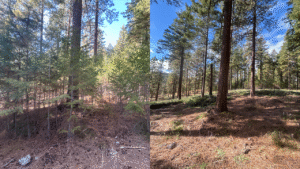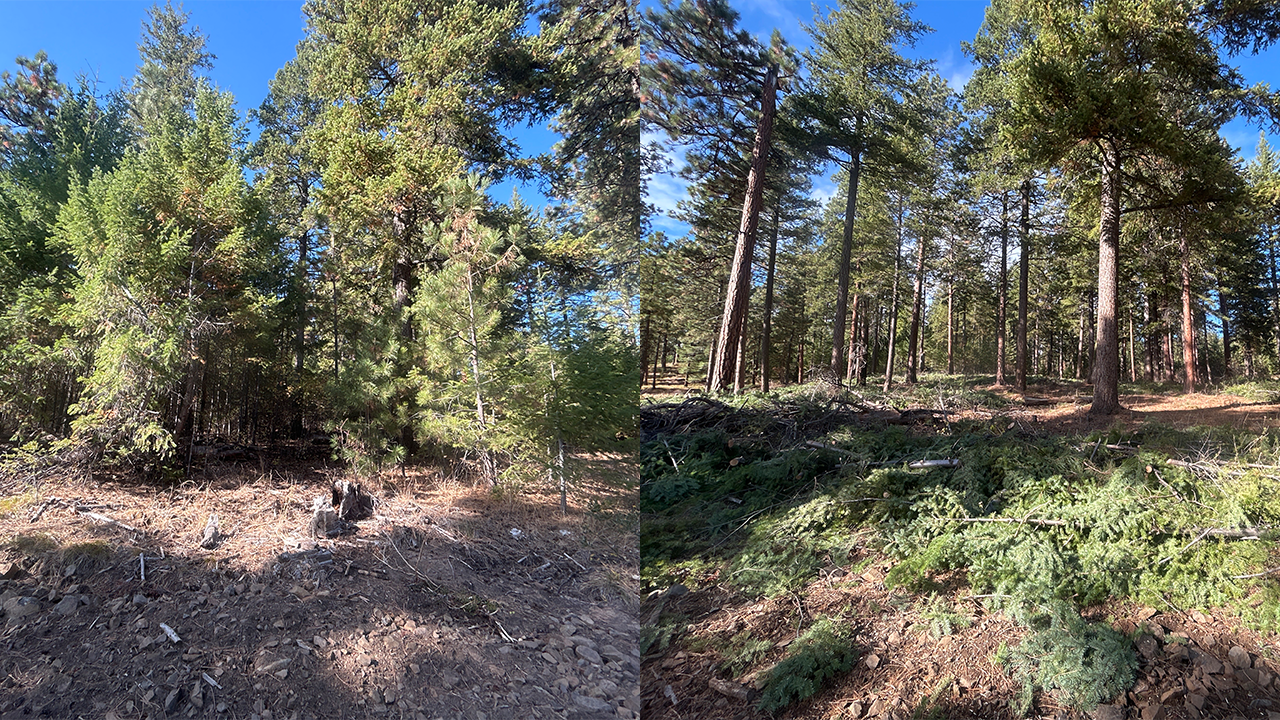The images offer a stark contrast. On the left is a snapshot (see above) of an overly thick forest while the right shows the impact of post-treatment.
The Rocky Mountain Elk Foundation is a major advocate for active forest management, meaning various periodic treatments that maintain or enhance wildlife habitat while also reducing the risk of high intensity wildfires and improving overall forest health. Examples include prescribed burns, forest thinning, wildfire restoration and noxious weed treatments, to name a few.
Research shows thinned forests are healthy forests. Overgrown forests are more susceptible to drought, insects, disease and wildfires because of their heavy fuel loads. Thinned forests, on the other hand, allow sunshine to reach the forest floor which feeds the soil and root structures, and bolsters native grasses and vegetation that benefit elk, mule deer and other wildlife.
Before and after imagery often best highlights the visual and beneficial impacts of forest thinning. For example, RMEF provided $78,000 in funding to help the Washington Department of Fish and Wildlife complete several 2024 thinning projects on the Colockum Wildlife Area just south of Wenatchee in central Washington. Crews thinned 800 acres of overstocked woodlands to open the canopy and provide better forage while leaving unthinned areas as hiding cover for wildlife. The project helps return the forest to a healthier historic condition.
RMEF has a lengthy conservation history in the immediate region having conserved or protected more than 82,000 acres and enhancing more than 6,300 acres of wildlife habitat. Projects range from thinning, seeding and fertilization to repairing wildlife water sources and removing or modifying fencing.

(Photo source: Washington Department of Fish and Wildlife)
